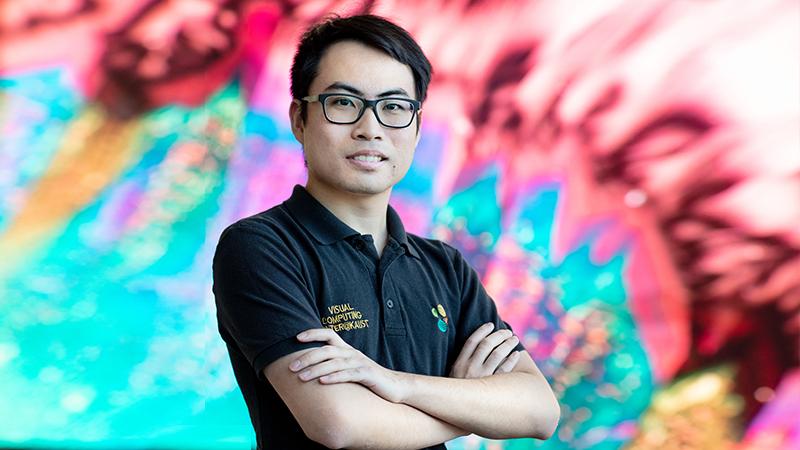© 2021 Merlin Lightpainting
By replacing a complex hardware setup with simple hardware paired with optimized image processing, researchers from KAUST have developed a faster and more accurate three-dimensional (3D) particle-tracking system.
Observing the 3D motion of particles in flow is important in studies of aerodynamics, fluid flow and molecular dynamics. Conventionally, this is performed using a complicated arrangement of multiple cameras, the images from which are analyzed and compared to reconstruct the motion of individual particles in 3D space over time. However, due to the complexity of the setup and the need for frequent and finicky calibration, such 3D particle velocimetry systems are often large, expensive and difficult to use.
Holography offers a promising simpler alternative. In this approach, the particles are illuminated with a laser beam and the particle image is captured by a single camera. As the laser light diffracts around each particle, the 3D location of the particle can be measured from the size of the diffraction ring in the image. However, while the hardware for such a system is well established, the software for reconstructing the particle flow is still in its infancy.
KAUST’s Ni Chen and Congli Wang in Wolfgang Heidrich’s group have now developed an optimized particle-motion reconstruction algorithm that could greatly expand the adoption of digital holographic particle velocimetry.
Read the full article


